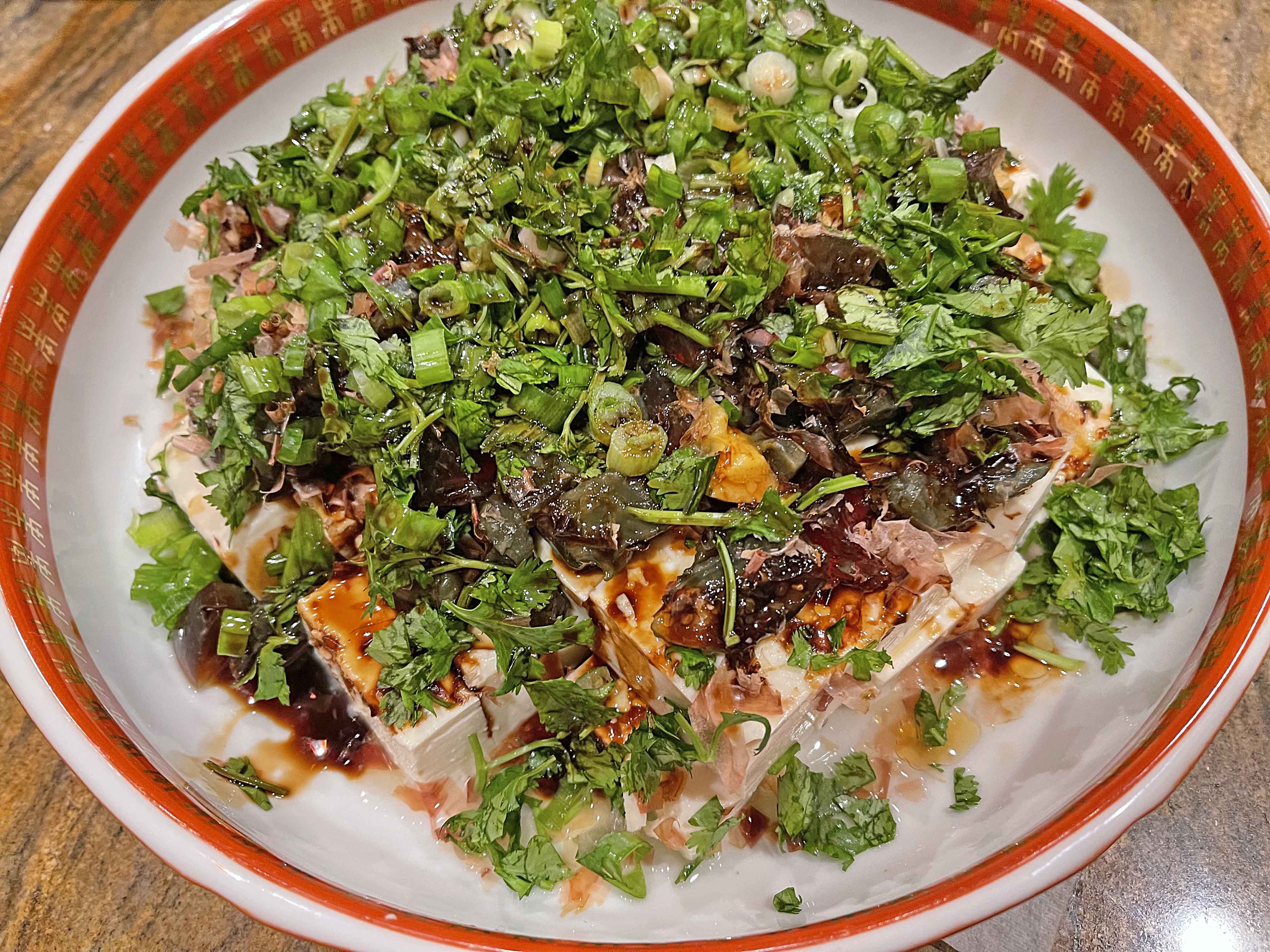Tofu with Thousand Year-Old/Century Eggs (Pidan Tofu)
- camissonia
- Oct 14
- 3 min read
I used to hate Thousand-Year-Old Eggs ('Pidan') as a kid. Probably because the only time I would be tasked with eating them was once a year when we were at my Grandma's for Chinese New Year and these darned things would inevitably show up in the appetizer course along with Chinese ham, abalone & mayonnaise, and jellyfish salad - all of which were fantabulous, with the glaring exception of those gnarly looking black eggs. Fast forward about 5-6 years after I came to California in 1983, I had an epiphany after tasting a traditional (though not in my household) rice porridge (congee) with pork and diced 1000- year-old eggs. Now I rave about them. And, btw, they are, as far as I know, NOT a thousand years old...
For the uninitiated, 'Pidan' is undoubtedly an acquired taste. But once you've acquired it, you'll never go back. Here's a blurb from Wiki describing its origin and method of production:
A recipe for creating century eggs through this process starts with the infusion of three pounds of tea in boiling water. To the tea, three pounds of quicklime (or seven pounds when the operation is performed in winter), nine pounds of sea salt and seven pounds of wood ash from burned oak is mixed into a smooth paste. While wearing gloves to prevent the lime corroding the skin, each egg is individually covered by hand, then rolled in a mass of rice chaff to keep the eggs from adhering to one another before they are placed in cloth-covered jars or tightly woven baskets. The mud slowly dries and hardens into a crust over several months, and then the eggs are ready for consumption.
According to some, the century egg has over five centuries of history behind its production. Its discovery, though not verifiable, was said to have occurred during the Ming Dynasty 600 years ago in Hunan, when a homeowner discovered duck eggs in a shallow pool of slaked lime that was used for mortar during construction of his home two months before. Upon tasting the eggs, he set out to produce more, this time with the addition of salt to improve the taste, thus resulting in the present recipe of the century egg.
On June 28, 2011, CNN's division CNNGo.com published an account of a Texan blogger in an article on "the most 'revolting' food in the world". The blogger said the dish "tastes like the devil cooked eggs for me." The remark made headlines in Taiwan and China. CNN has received thousands of complaints and the largest century egg manufacturer in China sent a letter to CNN to blame the report for being arrogant and disrespectful to other cultures. The culture clash has been widely reported with a waggery tone in China. In Chinese internet forums such as Tianya and Douban, some ridiculed the report for being "unfair" to mao dan, chicken feet and stinky tofu which have a reputation for "awfulness". A week later, CNN officially apologized for its remarks on century eggs, describing it "a delicacy in Chinese culture and by global gourmets in the know.
And for years I thought they preserved the eggs in horse urine. Go figure. If that Texan blogger really thought this was the most revolting food in the world, well he's obviously never had rocky mountain oysters before...
A simple and delicious cold dish comprised of soft/silken tofu, 1000-year-old eggs, bonito shavings, scallions, cilantro, spicy pickled mustard, sesame oil & soy paste, this recipe has several iterations in both Taiwanese and Cantonese cuisine, and this is my version:
1
Searing the Beef
Sear beef fillets on high heat for 2 minutes per side to form a golden crust. Let it cool before proceeding to keep the beef tender.
2
Mushroom Duxelles
Cook the mushrooms until all moisture evaporates to prevent soggy pastry. Aim for a thick, paste-like consistency.
3
Puff Pastry Handling
Keep the puff pastry cold to avoid softness. Chill if it becomes too soft, and score the top lightly without cutting through.
Notes



1
Place tofu cubes in a single layer on a serving dish or platter.



2
If using the pickled mustard, chop and soak in water 5-10 minutes, then rinse and pat dry with paper towels. This will get rid of some of the excess saltiness. Peel & quarter the century eggs.



3
Top the tofu with the century eggs, scallions, cilantro, diced pickled mustard, and bonito shavings. Drizzle with sesame oil and soy paste.
Instructions
Two 14-oz pkgs soft or silken tofu (cut into large cubes)
6 Century eggs (Pidan) peeled & quartered
5 scallions chopped
1/2 cup chopped fresh cilantro
1-2 tbsp. diced spicy pickled mustard ('Zha Cai' or Szechuan Preserved Vegetable) - optional
3/4 cup bonito shavings (3 packets)
1 tbsp sesame oil
3-5 tbsp soy paste (according to taste)


Tofu with Thousand Year Old Eggs (Pidan Tofu)
Prep Time
10 min
Cooking Time
10 min
Rest Time
0
Total Time
20 min

Comments